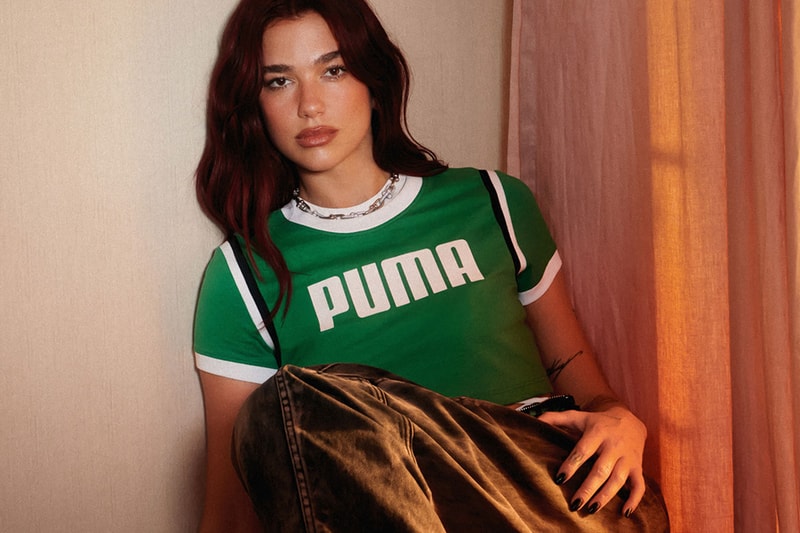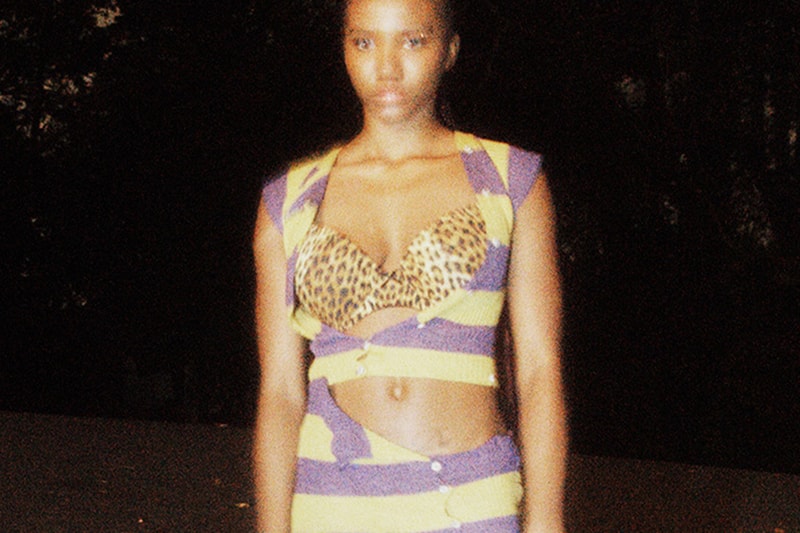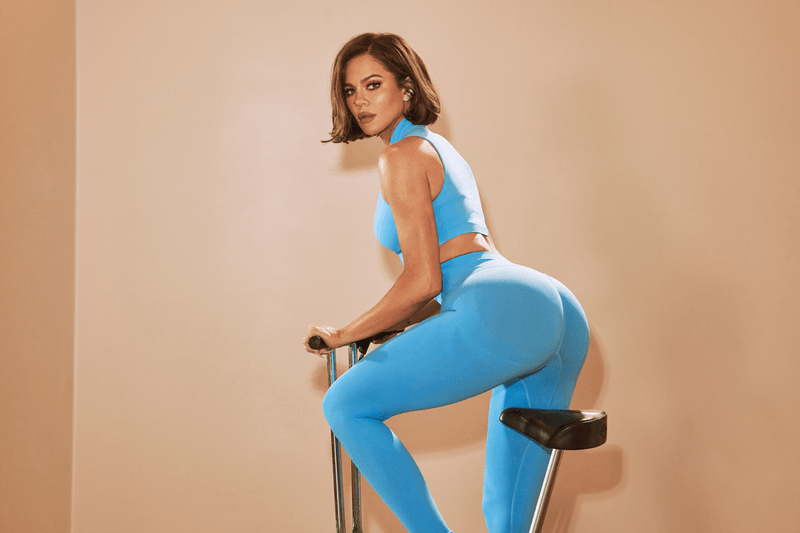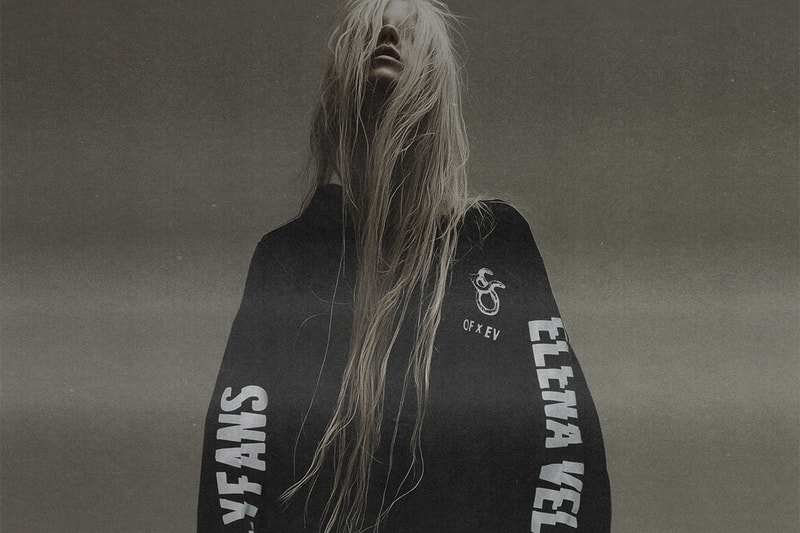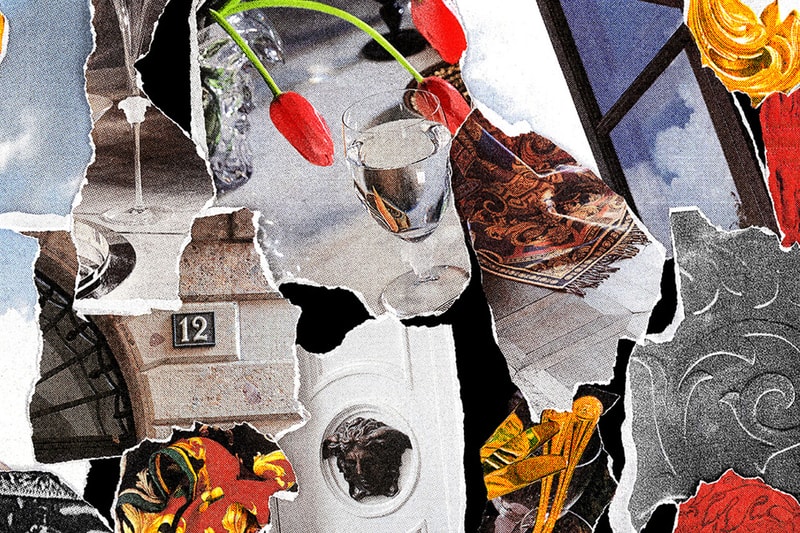RM of BTS on His Debut Solo Album 'Indigo' and Becoming More Like a "Wild Flower"
info@hypebae.com (Hypebae) Mon, 19 Dec 2022 Hypebae
RM of BTS, real name Kim Namjun, finished off the year 2022 with a bang, releasing his first-ever solo album Indigo comprised of 10 tracks featuring names like Erykah Badu, Mahalia, Anderson .Paak and more.
The release marked a major moment for the K-pop artist in his career -- it took him 15 years to put together an album from when he began sharing his music on online hip-hop communities under the moniker Runch Randa in 2007. After taking the world as the leader of the global group BTS, the musician is now revisiting his roots while celebrating the end of his 20s with a full album (In Korea, newborns are considered 1 year old at birth and turn a year older on January 1 rather than on their birthday. RM would be turning 30 in Korean age on January 1, 2023 at the time of this interview, which has been edited to use his Korean age throughout for clarity).
RM shares that while he's seen international success as a member of BTS, he has struggled with finding his identity and purpose throughout his artistry. It was only until he came across artist Yun Hyong-keun that RM felt like he found the answers to his questions. Yun was a leading figure in the Dansaekhwa (monochromatic abstract painting) movement, and stressed artists establish their own humanity before pursuing art. Indigo is a direct reflection of this philosophy as RM illustrates his life in its most real form in the 10 tracks.
Our associates at Hypebeast Korea spoke with the South Korean rapper about the inspirations behind the album, as well as his future plans and vision as an artist. Continue scrolling to read the full interview.

This is your first solo album. How do you feel?
I feel relieved. As an artist, I think there is a tremendous difference between having a studio album and having only singles and doing features. It feels like I’ve finally done my homework that I’ve been putting off for a long time. Also feels like an initial public offering of the RM brand. I’m very proud that I got to leave behind a record of my trials and tribulations at the end of my 20s.
How have you been since releasing your album?
Working on this album set something off in me. I actually started working on new materials one or two weeks before releasing this album. Putting Indigo together was hard work, so I wanted to take some time off after releasing it. But once I released this album, I found new inspirations and felt the desire to work on new music. I realized that I’m really not the type to take days off.
Could you give us some hints on what you’ve been working on?
I’m trying to create something that is lighter and more playful. Indigo was a serious endeavor that I contemplated for four years. It carried a special weight, because it was meant to showcase me as an artist to the world for the first time. My plan is to release something more easygoing next. It will either be a single or an EP.
What took so long to release your first solo album?
It wasn’t easy to prepare solo material, because I was dedicating most of my energy to BTS. But I did want to release a studio album as a solo artist at some point. I don’t think it’s healthy to have your entire identity wrapped up in a group. This group, of course, is a crucial part of my life. But it does not entirely represent who I am as a person. I had to release this album to stand on my own as an individual.

A photo of RM's studio shot by the musician himself.
I understand that you drew your inspiration from art when making this album.
I developed a serious interest in art and started going to exhibits around late 2018. I started working on this album in 2019, so these two things coincided. It became very natural to connect art and music for me. I came across many different artists at the time, but there was one artist, in particular, that I really wanted to model my life after. That was Yun Hyong-keun.
What about Yun Hyong-keun’s life and work inspired you?
By the time he was around my age, he had already experienced the Japanese colonial era, the Korean war, and the dictatorship. He had a gun pointed at his head, was imprisoned, and experienced repeated brushes with death. It’s a life that I can’t even imagine. Despite the circumstances, however, he was a sincere and pure individual. “You be a human ‘til the death of you,” as Erykah Badu sang in “Yun,” was a line that embodied his attitude towards life. That’s what gives resonance to his belief that you should strive to establish their own humanity before pursuing art.
What does “you be a human ‘til the death of you” mean to you?
Protecting your “humanhood” is an intense battle. It involves a lifelong struggle with your conscience. It involves overcoming injustice, desire, and anxiety within yourself. In Yun’s time, Korea was a poorer country than it is now. There were many things that weren’t right. It was an era that forced people to compromise with injustice and betray one another. It was an era that threatened your humanhood. But Yun never blamed his time or his fate. He maintained his integrity as an artist. I don’t dare to walk in his shoes, but I believe that I would be a better person by keeping his teachings close to my heart.
The influence of the song’s namesake felt very apparent, because “Yun,” to me, felt like a commentary on the entire album.
That’s very accurate. This album is structured to start off with a hint. “Yun,” along with the artwork used on the album’s cover, acts as a commentary on how to understand the entire album. It explains what each track means, how the stories were compiled, why I created this album, and how I want to live. This track provides the framework in which the listener can understand the other songs on the album and the album in its entirety.
Could you pick a line from “Yun” that permeates the entire album?
“F*** the trendsetter.” That is a potent line. It appears again as “Trendsetter? I’m a friend, better” in “Still Life.” To be clear, I have nothing against the trendsetters. The celebrities that set trends are admirable in their own way, but I have no desire to assume that position. I’ve seen so many people flash and disappear. That’s not what I want for myself or for my team.
That seems consistent with the theme of “Wild Flower” – the desire to remain an eternally-lasting wildflower, rather than fireworks disappearing in the sky.
I once aspired to be more like fireworks. Like someone who comes with a bang and disappears into the night. But after encountering Yun Hyong-keun’s work, I began to reflect on why I started making music in the first place. What I realized is that I started off wanting to write poetry. Even when I started rapping, I approached it as rhythm and poetry. So I decided to return to where I started. I decided to become an artist who, like a wildflower, stays rooted to my true self.
I find it interesting that, as a result of trying to become an artist like a wildflower, the album became filled with various genres.
I’ve heard many people say that the album is lacking consistency for that reason. I can’t deny that in terms of genre, but the lack of consistency, in itself, is consistent with the theme of this album. On the cover art, you can see Yun Hyong-keun’s “Blue” hanging on the wall. Yun’s signature pieces usually involve earthy colors, but this piece is from a prior era. I think I am an artist in that blue period. I’m still trying to find my signature sound. In that sense, I believe that Indigo is my attempt to document Kim Namjun, at 29, in love with all types of music and searching within to find something of his own.
If this album is your attempt to “document,” I find it ironic that the first song that you began working on was “Forg_tful.”
It was the result of me being forgetful that inspired me to start documenting. In the television show The Dictionary Of Useless Knowledge, writer Kim Young-ha once mentioned that the reason why people carve ‘I heart so and so’ or ‘so and so was here’ on rocks at tourist sites is because emotions like love are so fragile and our recollections are so volatile. That is the reason why I wrote “Forg_tful.”
If the purpose was to document before losing your recollection, did you have any idea that this album would turn out like this?
I’ve read many interviews with artists since I got into art. Many artists say that they have no idea how the piece will turn out until the moment the brush hits the canvas. They say that creation is driven by your subconscious, memory, and inspiration and not necessarily by your intention. I related to that idea when making this album.

RM says he loves taking walks at the park, like he sings in his track "Forg_tful."
Perhaps we should be looking for the consistency in RM as a person rather than in genres of music.
Indigo is RM. If you look at it that way, you will see the connection between the songs. After all, I am the result of the music that I listened to as a middle school and high school student. I once read a phrase that went something like, “life, as an adult, is nothing but a tribute to your childhood dreams.” Nothing seems truer than that statement. Hip-hop accounts for the largest portion of my musical interest growing up, but I can’t leave out rock music and Korean indie music. When I was preparing for this album, I realized that Nas, Epik High and Dynamic Duo were highly influential to me, but artists like Radiohead, Portishead, and Bon Iver were just as influential. It’s only natural that all those influences are captured in this album.
Is that why you changed your moniker to RM?
In a way, yes. As a child, I thought I was only into rap. I thought the most important thing was to have monstrous rapping skills. That’s how that childish name came about. But I realized that rap was not the only thing I was interested in. If you have “rap” in your name, it creates a restriction in what genre you can pursue. Regardless of what others may think, I became freer after changing my moniker. It allowed me to explore freely in this album.
And yet, hip-hop is still a large part of this album.
Of course. Nothing changes the fact that I love hip-hop and that I started music by rapping. There’s no denying that my musical root is '90s hip-hop. But there is a difference between making a “hip-hop album” and making an “RM album that incorporates hip-hop.” I’m not necessarily trying to stick with hip-hop as my genre of choice. It would be more correct to say that, as a result of trying to capture my essence as a musician, hip-hop ended up accounting for a large portion of this album.
It seems that the album adheres to the idea that art should stay faithful to the artist rather than to the genre.
I don’t think this idea of purity in regard to the genre of music has much significance anymore. I was more focused on how well my music reflected my life rather than how consistent it sounded. I made no compromises, which I am very proud of. Times change and trends change, but this album will always be special in that it captured RM at 29.
This obsession with capturing your essence as a person is also very apparent in your choice of features.
I only recruited artists who had a profound influence on my story and on my life. I considered recruiting certain artists just for the hype, but it didn’t feel honest for this album. I wanted this album to be an honest documentation of my life. As a result, my childhood heroes and heroines became included in the featuring lineup. I’m proud that I got the chance, as I mentioned earlier, to pay tribute to my childhood dreams.
That seems consistent with the theme for “Wild Flower” and with other artists featured on this album.
That wasn’t on my mind when I was putting this album together, but I think it ended up like that. The artists featured on this album, including Yun Hyong-keun, are not the type of people who will flash and disappear. Some of them did have their fireworks moments. Cherry Filter had “Romantic Cat” and Epik High had “Fly” and “Peace Day.” But these artists did not stop there. They have found their own territory and have made their roots like wildflowers.

An Instagram DM exchange between RM and Paul Blanco, who worked with the artist on "Closer." RM says the Korean-Canadian artist was the only musician he recruited via DM.
In that regard, would artists like Kim Sawol, Paul Blanco and Colde be colleagues who are in the same phase as you?
They are all young artists, like me, trying out new things. For example, Sawol’s second and third albums are very different in style. That is why her voice from three years ago, which is closer to her second album, was featured in “Forg_tful.” People who know her from her third album may be surprised by this song. I felt that Colde and Paul Blanco, like Sawol, are also in their “blue period” like me. There was a lot that I could relate to.
Perhaps one of the artists in the album who already went through that period and has established her own roots as a wildflower may be Erykah Badu, who is featured on “Yun.”
I think of Erykah Badu as a queen of her own territory. Regardless of how trends change, she holds down her kingdom. She, along with D’Angelo, pioneered neo-soul and built an empire that is going to last forever. Like the artists that have their names etched in art history, Erykah Badu’s name will forever go down in musical history.
Would you say that Park Ji-yoon, who features on "No.2," is someone who has proven that there is life after the fireworks?
Many people still remember her as the singer from the “Coming of Age Ceremony” days. But she put out nine studio albums and has even released a new single recently. In my opinion, the music that she put out since Flower, Again for the First Time in 2009 is more true to her real character. She is someone who experienced success at an even younger age than me, found her own color, actively released music, and even got married and had kids. It’s very convincing and comforting to hear “don’t look back anymore” from the person who has lived to testify that there is, in fact, life after fireworks.
You say that you were comforted by the line “don’t look back anymore.” Does that mean you had some regrets about the road not traveled?
This is the most difficult question to answer truthfully. Recently, I watched Everything Everywhere All At Once. That film visualized many of the ideas that I’ve had. This idea about multiple versions of myself existing based on small choices I made. I often think about what it would have been like if I continued my studies or became something other than a musician.
To be honest, one decision that I had thought about particularly often was my decision to become a part of a boy band. In the late 2000s, musicians like ZICO, Changmo and Giriboy were the people that I started out with. In my journey with BTS, I drifted further and further away from that world and was tormented by the thought that the people that I liked – and the people who liked the same music that I liked – did not have any love for me. I often wondered whether I made the right decision by joining a boy band. At the time, BTS, in the Korean hip-hop community, was treated like a complete outsider. That stressed me out. I was constantly thinking about how I would be able to overcome that perception and how to define “music” or “hip-hop.”

When you say that you are not looking back, could I assume that you found your answer?
I’ve heard that next year is the 50th anniversary of the birth of hip-hop. In those 50 years, hip-hop did not remain a monolith. Its range and boundaries constantly change. When I was struggling, artists like Drake, Lil Uzi Vert and Post Malone found mainstream success. These artists changed, blended, and dismantled the genre. It became very apparent that this purity in regard to genre no longer meant anything.
There are, of course, some purists in genres like jazz and hip-hop. But after having been on both sides of the fence, I now realize that I don’t need to put myself within those boundaries. I really felt that after meeting Nas, Drake and Pharrell in America. It no longer feels important to prove whether I am hip-hop or not or whether I am faithful to the rules of the genre or not. Good music is good music.
The boundaries of hip-hop have really broadened for Korean artists these days.
I feel that as well. Now it’s natural for rappers to sing and for singers to rap. K-pop artists are collaborating with hip-hop artists all the time. Many artists now identify as both. Rappers in the Korean hip-hop scene who I thought were on a path different than mine are now appearing on television shows even more than me. Fans of hip-hop are also more open to rappers appearing on those shows. As the boundaries continued to blur, I realized that I was suffering from things that would become meaningless in time. That gave me some comfort.
Would you say that this album is the result of you looking forward after deciding to no longer look back?
In fiction, heroes eventually accept their fate and resolve the conflict by finding their unique strengths. I decided to stop thinking about the road not traveled. I decided to think that what I became is inevitable and that I am the best version of myself. That is what allowed me to create this album that was completely true to myself.
You make frequent use of contrasts throughout the album, whether it’s fireworks and wildflowers or highways and trails. Was that a part of your attempt to symbolize the gap between RM of BTS and Kim Namjun?
I’ve been thinking a lot about those two ideas. My record label and my bandmates may not feel comfortable being compared to fireworks, but I am not trying to downplay our value by describing my work with BTS as being comparable to fireworks. I’m a member of BTS – I have no desire to downplay what we do. I’m extremely thankful for everything I gained and experienced as a part of this team. I would not have been able to work on my solo album in this privileged environment and materialize everything that I had planned if it weren’t for my activities with BTS. But I am trying to remain vigilant about not having my entire identity wrapped around BTS.
Have you found a way to ease the tension between those two identities?
I don’t have the answer, but I’m experimenting with how those two can coexist. The most important content I prepared for Indigo was the two live shows – “Live in Seoul'' and “Live in New York.” The show in Seoul was held at Rolling Hall, which is a venue in Hongdae that symbolizes the underground scene. The show in New York was held at Dia Beacon, which is a large art museum that I rented out. I dressed casually for the show in Rolling Hall and had fun with 200 or so people in the audience as if I was playing a club show. In contrast, we filmed the Dia Beacon show with me putting on different looks from the latest Bottega Veneta collection for each location. Maybe this is a greedy experiment, but I’m trying to be RM as Kim Namjun as well as RM as a member of BTS.
But don’t you think that not everyone has the ability to be that greedy or the ability to materialize it?
That’s what I thought as well. I believe that there are things in the world that only I can do right now. That kind of thinking is what motivates artists to continue living as artists. Some may think that I am too greedy and that I am not consistent enough. But these are things that only I can do at this moment. In time, I believe these experiments will be re-evaluated.
You are almost 30 in Korean age. What kinds of experiments would you be doing in your thirties?
As a 15-year-old under the moniker Runch Randa, I was playing shows at a small venue in Hongdae called Geek while dreaming about playing at Rolling Hall. As RM of BTS, I’m now on the Billboard charts. I think about how I could make the two coexist. I think about how I could make art and music coexist in my career. I think about how my identity as a person born and raised in Korea and my identity as someone who found success in America could coexist. The issue of coexistence is my biggest interest. I believe that, in my thirties, I would be experimenting and challenging myself to address that issue.
It sounds like something that would require a lot of courage and effort.
I met and spoke with Pharrell Williams not too long ago, which actually gave me a lot of courage. He is now, in Korean age, fifty years old. He says that he’s been making music for thirty years. He got a lot of love for songs like “Happy,” but he is still making songs like “Cash In, Cash Out.” He’s also released his own clothing line Humanrace with adidas and proved himself to be a fashion icon. I’ve also heard that he’s a real family man. And he was very humble and polite in person. Seeing all that coexist in this man proved to me that it could be done.
It made me think that, regardless of what other people think about how difficult or improbable it may be, I could still strive to become someone like him. If that man could be that successful in four or five areas over thirty years, perhaps I could simultaneously pursue two or three interests as well. I think I could continue to mature as a person, succeed as both a solo artist and as a part of a collective, and conduct projects for Korean art. It may not be easy, but it doesn’t seem impossible.
And this album is the beginning of the experiment.
That’s correct. I’m okay if this album does not get a lot of immediate attention. I welcome mixed reactions to this album. I believe that the things that people now consider as strange or inconsistent, in a couple of years, will be re-evaluated. As the ideas of locality and nationality become increasingly less significant, my album will be one day considered one of the pioneering projects. And if I succeed in my future experiments, this album will go down as a milestone achievement in which RM and Kim Namjun made multiple identities coexist.
